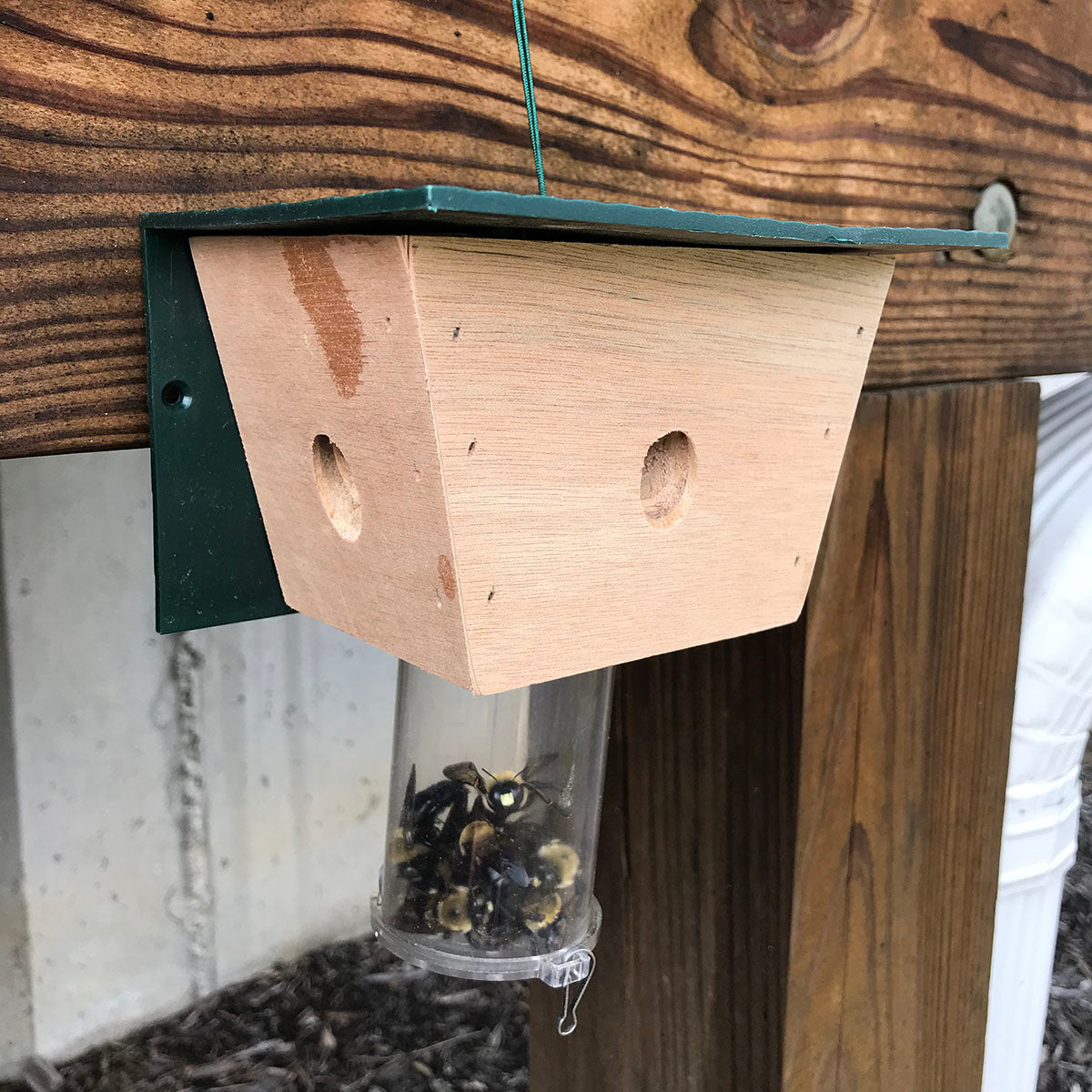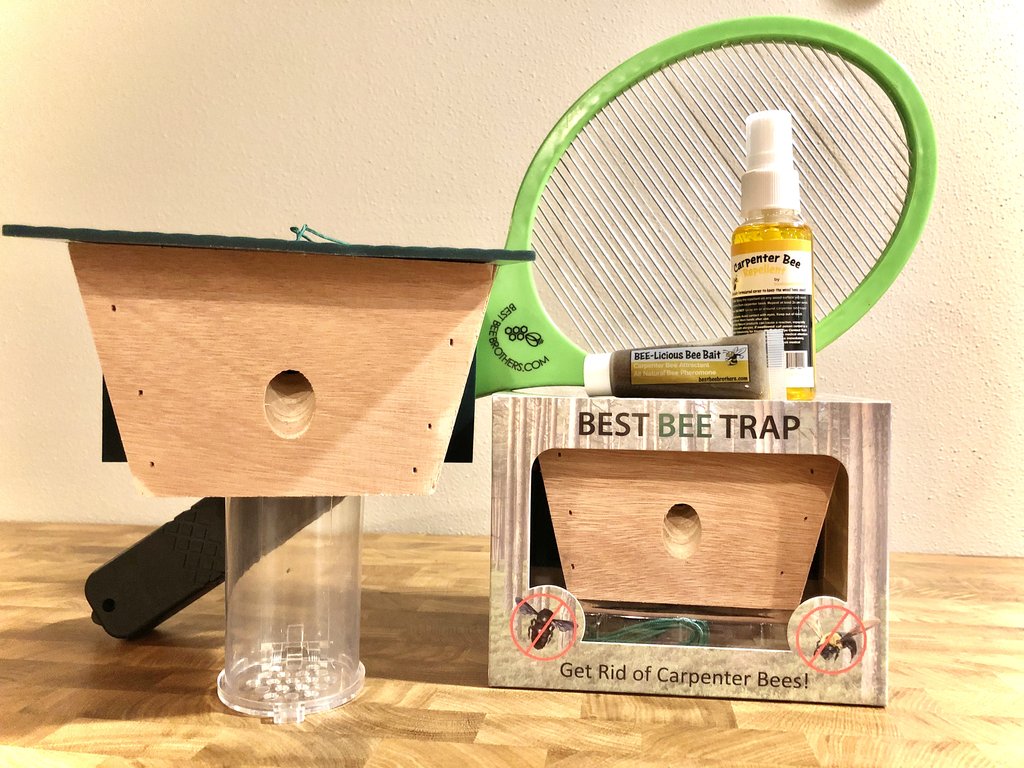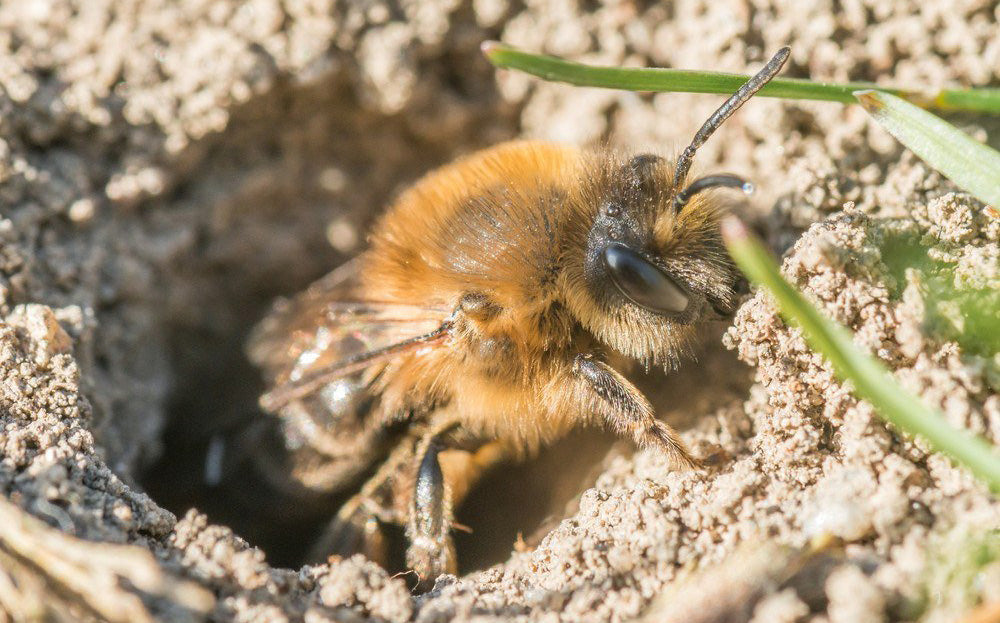Carpenter Bee Trap Lifespan & Warning Signs
The Best Bee Trap and the Pine Wood Carpenter Bee Box Trap generally require replacement every 2–3 years. This number can vary depending on the trap’s exposure to the elements and whether the trap was left out over winter. The longer the trap is outside, the faster it will deteriorate.

Remember, the trap is built to attract carpenter bees only. It is made of softwood and emits a natural scent. The traps are made without chemicals that can deter carpenter bees, so there is no protectant on the wood and no heavy-duty glues to keep pieces in place. By design, the natural composition of the trap effectively attracts carpenter bees.
Below are a few signs it is time to replace your carpenter bee trap:
Warped Wood
On the Best Bee Trap the softwood is untreated, so after a few years it can warp from water and sun exposure. You may notice the green roof no longer sitting completely flat on the wooden base. If there is a gap greater than ½″ between the roof and base, then it is time to replace the trap. This gap could let carpenter bees escape the trap, rendering it far less useful.
On both the Best Bee Trap and the Pinewood Bee Box Trap, the exterior wood may start to peel or flake off after too much water exposure. This is especially prevalent in areas with plentiful rain in summer and below-freezing temperatures in winter. The wood will expand and shrink and then eventually splinter. But the chipping wood is an issue only if the trap starts to fall apart. You don’t want a trap full of dead and live carpenter bees to suddenly fall down and burst open!
Crooked or Broken Plastic Receptacle
On all styles of the trap, the bottom receptacle should be vertically aligned. If the plastic catch container sits on an angle of any sort and can’t be readjusted, then it’s time to replace the trap.
It is also time to replace the trap if the plastic container is cracked or has holes. This can happen from either weather or rough handling of the trap. The holes and cracks can lead to the carpenter bees’ escaping.
To preserve the integrity of your trap, try to limit its exposure to outdoor elements. Placing traps in locations that are underneath overhangs may help. Also, be sure to bring your traps inside during the winter. Empty them of the dead carpenter bees and store the traps in a cool, dry place like a garage or basement.
As always, if you have questions about your trap, email us at customersupport@bestbeebrothers.com.









8 comments
Customer Support
@Lisa Lichtig – Great questions. Our traps are effective within a 15ft radius. Depending on your property, you will want enough to cover the sunny areas the bees seem to be attracted to. No, you don’t need WD-40 and steel wool with our corks. ~Customer Support
Lisa Lichtig
How many traps do i need? Meaning how far apart? Also i have been plugging up the holes myself with W-D40, steel wool and then a dowel plug. It works. But i like your corks. Do i need steel wool and WD40 with your corks? Thanks so much
Customer Support
@Al – Depending on how well nourished the bee is, some live for a few days within the trap. ~Best Bee Brothers
AL
Trap works perfectly. How long do they live once stuck in the trap?
Michele Rogers
Well worth the money. I bought 2 and after a week the one is half full.
Leave a comment
All comments are moderated before being published.
This site is protected by hCaptcha and the hCaptcha Privacy Policy and Terms of Service apply.